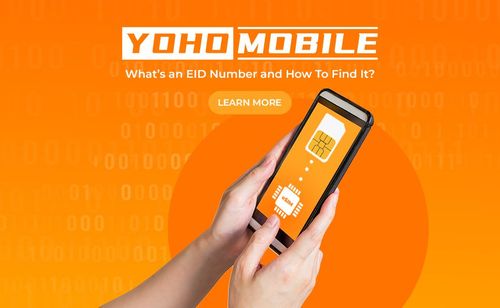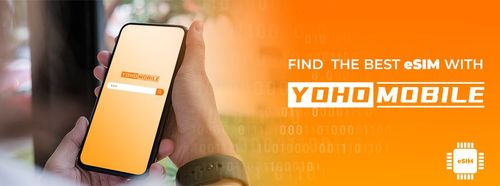Explore the details of EID numbers in this comprehensive guide. Understand what they are, where to locate them, and discover common troubleshooting tips.

Image by Vecteezy
What is an EID Number?
The EID, or Embedded Identity Document, is a unique identifier that plays a crucial role in how eSIMs work. In simple words, it’s a globally unique serial number that identifies and authenticates the eSIM to mobile carriers. It enables devices like iPhones, Android smartphones, iPads, and smartwatches to connect to cellular networks such as GSM, LTE, and CDMA without the need for a physical SIM card.
The EID number also provides a secure way to identify each non-removable eSIM built into a device. Without it, carriers couldn’t reliably recognize and authenticate eSIMs across different phones and gadgets. The EID ensures proper network access, service provisioning, and billing.
How to Locate Your EID Number
The EID number is a unique 32-digit code found in devices using eSIM technology. You might be wondering how to locate your EID number. Fortunately, whether you’re using an iPhone or an Android phone, we’ve created a step-by-step guide to help you find it.
Steps to Find EID on iPhone
If you purchase a new iPhone, the best method is to check the EID code from the iPhone box. You can find this number printed around the area where the IMEI and Serial numbers are listed.
In case you have a secondhand iPhone you can check it from your device settings:
- Go to “Settings” on your iPhone.
- Tap on “General”.
- In this tab, click on the “About” option.
- Scroll down until you see the EID number listed among other details like the serial number and IMEI.
Steps to Find EID on Android Devices
You can usually find the EID number printed on the box of your smart device. First, look around where the barcode, IMEI, and serial number are listed. Then, you may locate the EID number nearby. Typically, the EID is marked clearly, and you can use it to activate your eSIM with your carrier.
Additionally, you can check the EID through your phone settings by following these steps:
- Dial a Code: Some Android phones allow you to dial a specific USSD code such as *#06# to display the EID, along with the IMEI numbers. However, this method may not work on all devices. Here is an alternative way to find the EID number.
- Through Settings:
- Open the Settings app.
- Navigate to About Phone.
- Look for an option that says Status or IMEI information.
- In this section, scroll through the information presented. If your device supports eSIM, you should find the EID listed among the details.
Read more about EID numbers here.
Why EID Numbers Matter for eSIM Activation
The EID number acts like a digital fingerprint, uniquely identifying the eSIM on a device. When you activate and configure an eSIM on your device, the mobile carrier uses the EID number to configure and correctly associate the eSIM with your mobile account. The EID ensures the correct and safe eSIM profile is installed on your devices. This protects you against unauthorized use or duplication of the eSIM.
Benefits of Using eSIM and EID Numbers
- Flexibility: It allows users to change carriers or plans digitally, offering greater flexibility and convenience, especially for frequent travelers.
- International Use: You can activate a local eSIM profile using your device’s EID, avoiding the need for physical SIM cards when traveling.
- Troubleshooting: Customer support can use your EID to diagnose eSIM connectivity issues.

Image by Vecteezy
Common FAQs About EID Numbers
Is the EID number the same as the IMEI number?
No, the EID number identifies the eSIM, while the IMEI (International Mobile Equipment Identity) identifies the device.
How do I find my EID number on my Samsung phone?
To find the EID number on a Samsung phone:
- Access Settings
- Tap on About phone
- Choose Status or IMEI information
- You should find the EID listed here. If not, check under SIM card status or the phone’s packaging.
Can I use an EID number with any carrier?
EID numbers are carrier-specific. You must activate your eSIM with a carrier that supports eSIM technology.
Can I have multiple eSIM profiles on one EID?
Yes, most devices support multiple eSIM profiles, but only one can be active at a time.
You Might Also Be Interested In:
- How Many eSIMs Can You Add to Your Phone
- How to Easily Get and Activate Your eSIM with a QR Code?
- What Does No SIM Restrictions Mean?
Troubleshooting EID Number Issues
Solutions for Common Problems
EID Not Recognized
Solution: Verify that you entered the EID correctly. Then, contact your carrier to confirm that your EID is activated on their network. If you need assistance, you can reach out to us via WhatsApp or email.
Unable to Activate eSIM
Solution: Ensure you have a stable internet connection. If you use a QR code, ensure that you have scanned it properly. Try using the EID number directly if the QR code fails. Also, make sure your device supports eSIM.
Connection Issues Post-Activation
Solution: Restart your device. If the issues persist, then reset your network settings. Alternatively, contact your carrier for support.
Limited Connectivity
Solution: Check whether your device is in an area with network coverage. Additionally, check if you have topped up your eSIM. Also, confirm that your account is in good standing with your carrier.
